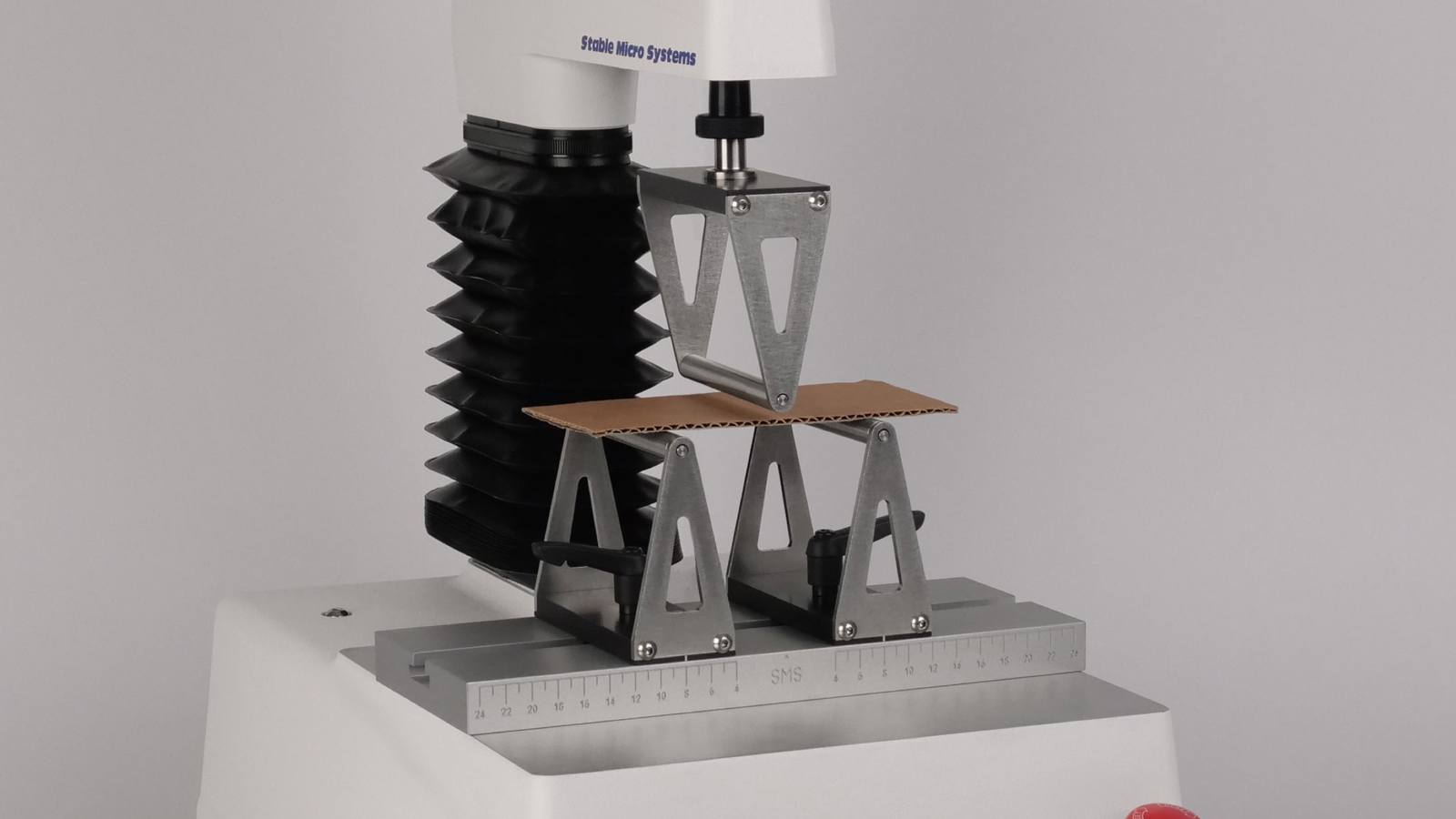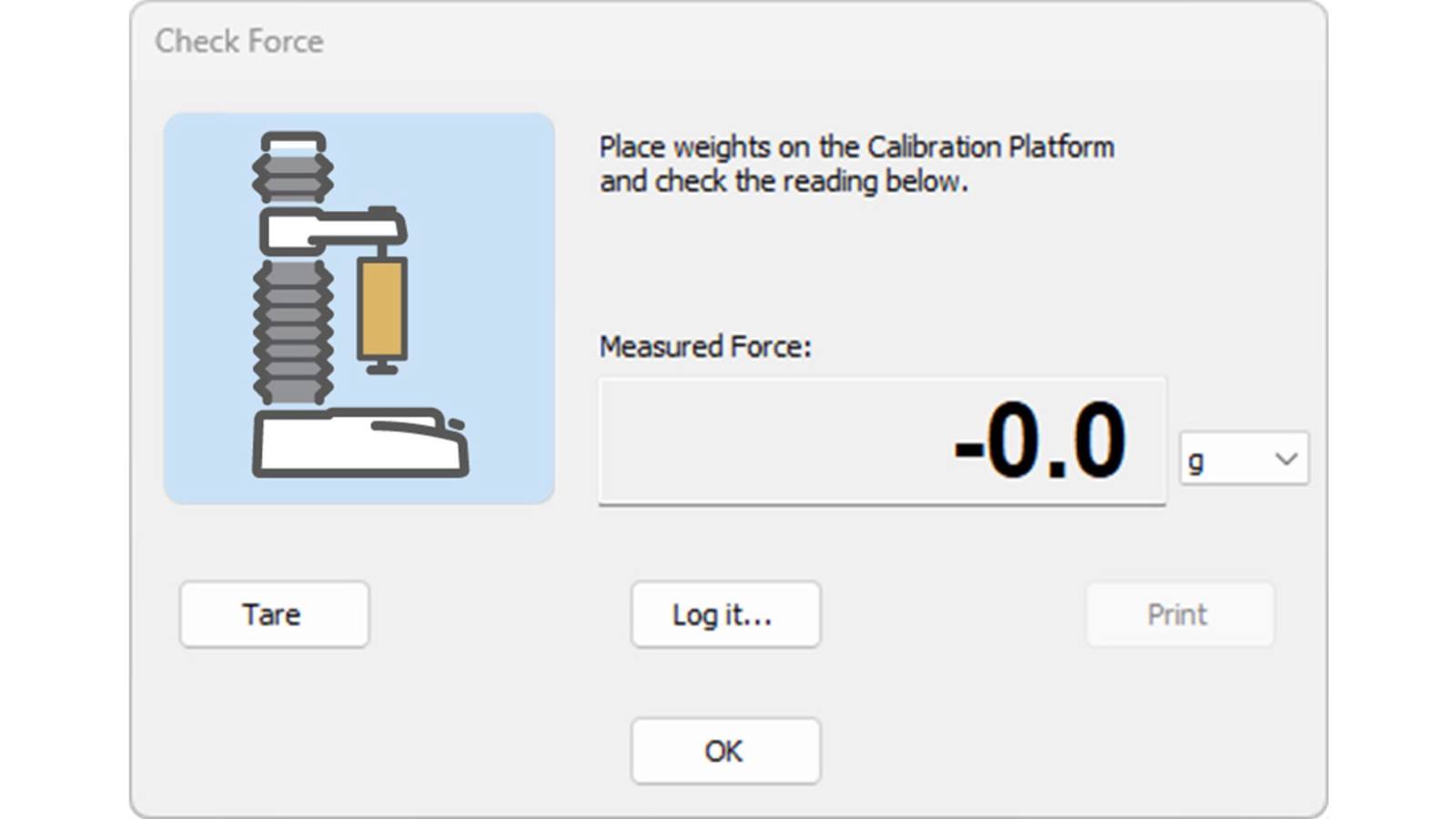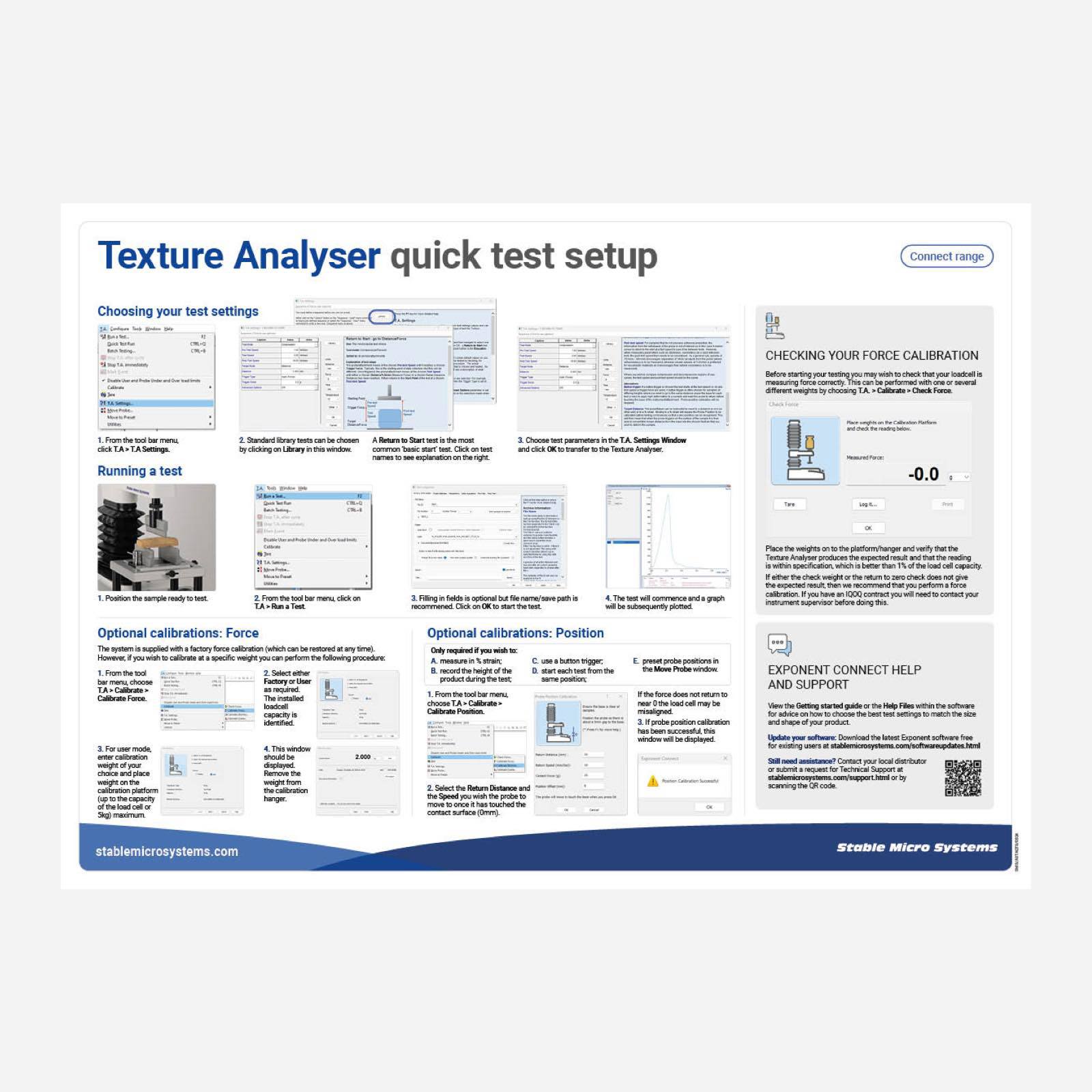
Understanding how a Texture Analyser works – calibration and verification

What is force calibration?
Force calibration is a process used to verify and adjust the accuracy and precision of force measuring instruments and equipment, such as Load Cells. It ensures that these instruments provide reliable and accurate measurements of force, which is essential in various applications and industries, including manufacturing, quality control, research, and testing.
In force calibration, a reference standard or known force (i.e. a weight) is used as a benchmark to compare and validate the readings of the instrument being calibrated. This reference standard is typically a calibrated force measurement device with a known and traceable force value. Force calibration is essential for ensuring the traceability of measurements.
Force verification
Rather than performing a full calibration, a user may prefer to perform a ‘force verification’ before starting the testing of samples. This is often used to determine whether or not the force measured from the Load Cell is linear and is measuring force correctly. To do this, the user applies loads (weights) of varying magnitude on to the platform/hanger and confirms that the forces are measured correctly by the Load Cell i.e. the Texture Analyser produces the expected result and that the reading is within specification, which is better than 1% of the Load Cell capacity. We recommend you check the force calibration when:
- The Load Cell is changed
- The instrument is moved
- The instrument is overloaded
- Various people have used the instrument and you are concerned about prior use

When you perform a force check, if either the check weight or the return to zero check does not give the expected result, then we recommend that you perform a force calibration.
Note: If you have an IQOQ contract you will need to contact your instrument supervisor before doing this.
Force calibration – an in-depth explanation
A force calibration is required to enable the Texture Analyser system to calculate the relationship between the signal from the Load Cell and force. The Load Cell measures an electrical resistance proportional to force. This is then measured by an Analogue to Digital Converter, which converts these values to a useful format.
A force calibration is carried out by recording the input voltage at zero load and after the application of a known calibration weight. The relationship between these two values is calculated and used as the force-voltage response until the next calibration.
The Texture Analyser system is supplied with a factory force calibration (which can be restored at any time).
Force calibrations are generally carried out after a change of Load Cell, when the instrument is used and when the Load Cell has been overloaded. Follow the procedure according to your quick setup poster.

Zero position calibration
A ‘zero position calibration’ sets a specific arm position to zero. It enables the measurement of absolute distance and product height as well as strain, and can help to speed up the testing process. A zero position calibration is carried out by attaching the intended probe to the Load Cell, then driving the arm down until a target force is exerted through the probe into the test platform. Once this target has been reached, the current position of the arm is set to ‘zero’.
The target force used in this calibration is specified by the operator and is generally larger for larger probes to ensure full contact.
It is not necessary to calibrate probe position unless you wish to:
- Measure in % strain
- Record the height of the product during the test
- Use a button trigger
- Start each test from the same position
- Preset probe positions in the Move Probe window.
Follow the procedure according to your Quick setup poster.
Force unit convention
The standard unit of force is the Newton (N). However, gram-force, shortened to grams (g) are more widely used for force measurement in the food industry. Displacements are generally measured in millimetres (mm) as the most convenient scale for food tests, during which test displacements range from approximately 0.1 mm for the fracture of hard, brittle products such as a biscuit breaking up to tens of centimetres for the tensile measurement of very extensible products, such as the extension of some types of confectionery.
Request a Quick test setup guide poster for placement near your instrument to inform users.
Request a comprehensive manual (PDF) to be emailed to you if you are missing your original version.














